
Sicily.
There’s a lot to unpack after our two-week sojourn over-the-top from Anchorage to Italy. I hope you enjoy the pictures and the story…
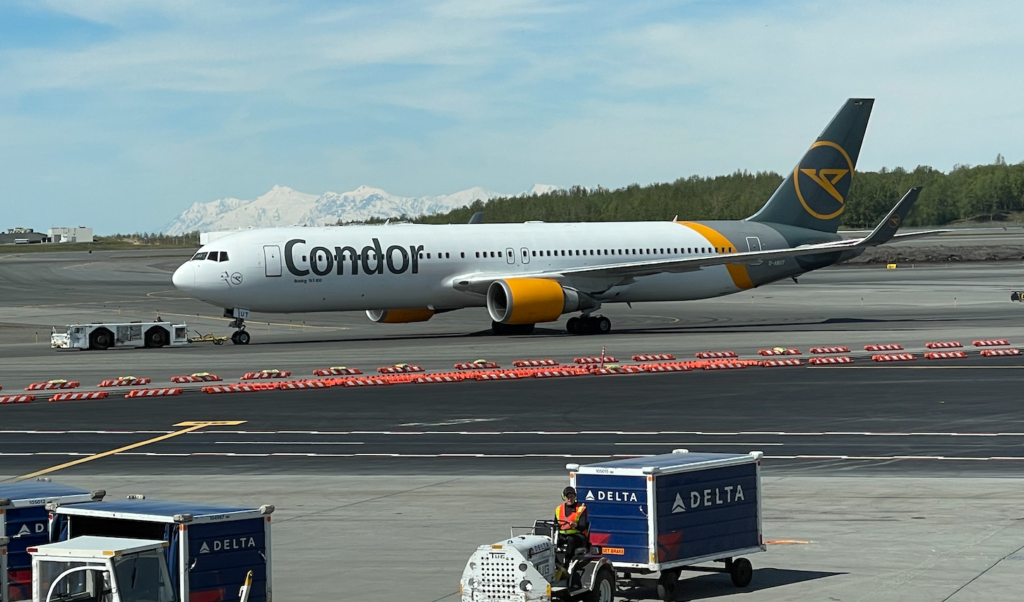
First, the flight itself was a blessing. It’s been more than two years since Condor flew nonstop Anchorage-Frankfurt.
Our first leg was in Business Class: almost-flat foldout seats (170 degrees), fluffy pillows, blanket, eyeshades, earplugs, over-sox and a couple of other goodies. But the food and drink flowed nonstop during the nine-hour flight.
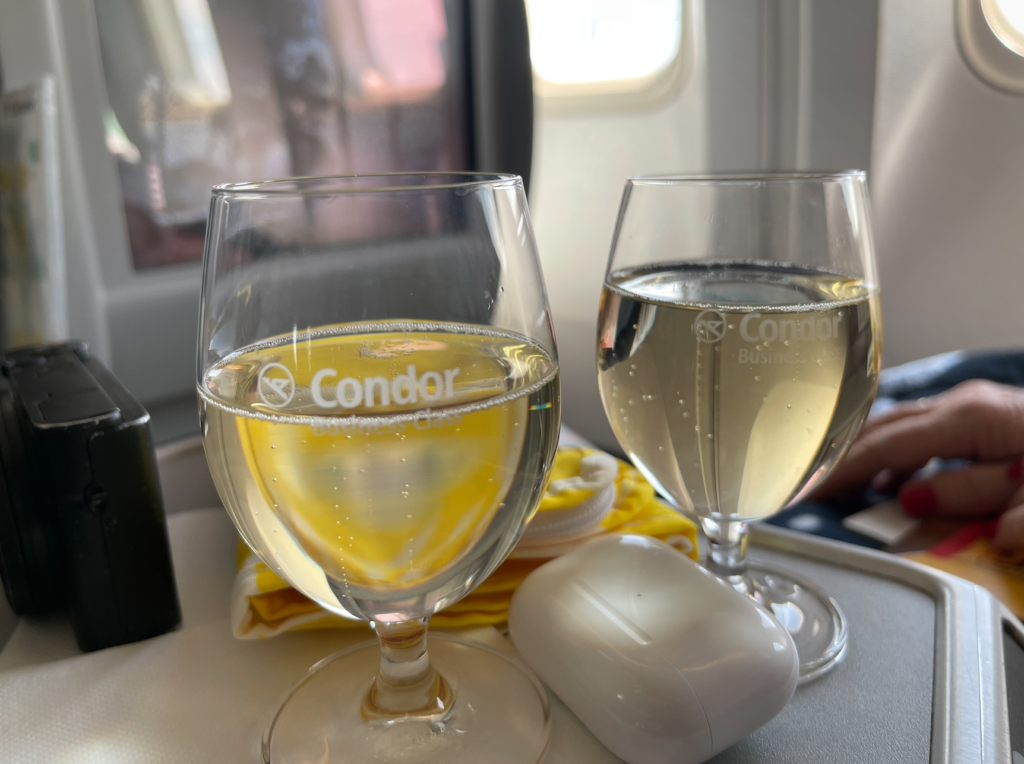
NOTE: Our outbound flight was delayed by two hours. We typically book long-ish connections when we have to re-check our luggage and check in again. Some folks missed their connecting flights, tho’.

Our time in Cefalu included a fair amount of wandering around to see the familiar family names that my wife and brother-in-law recognized growing up along the Mississippi River. Many Sicilians emigrated to the Mississippi Delta after the Civil War in the U.S.
Christy and I were joined by her brother, Sam, and his wife. I wrote an article about their quest to find “home” in Sicily.
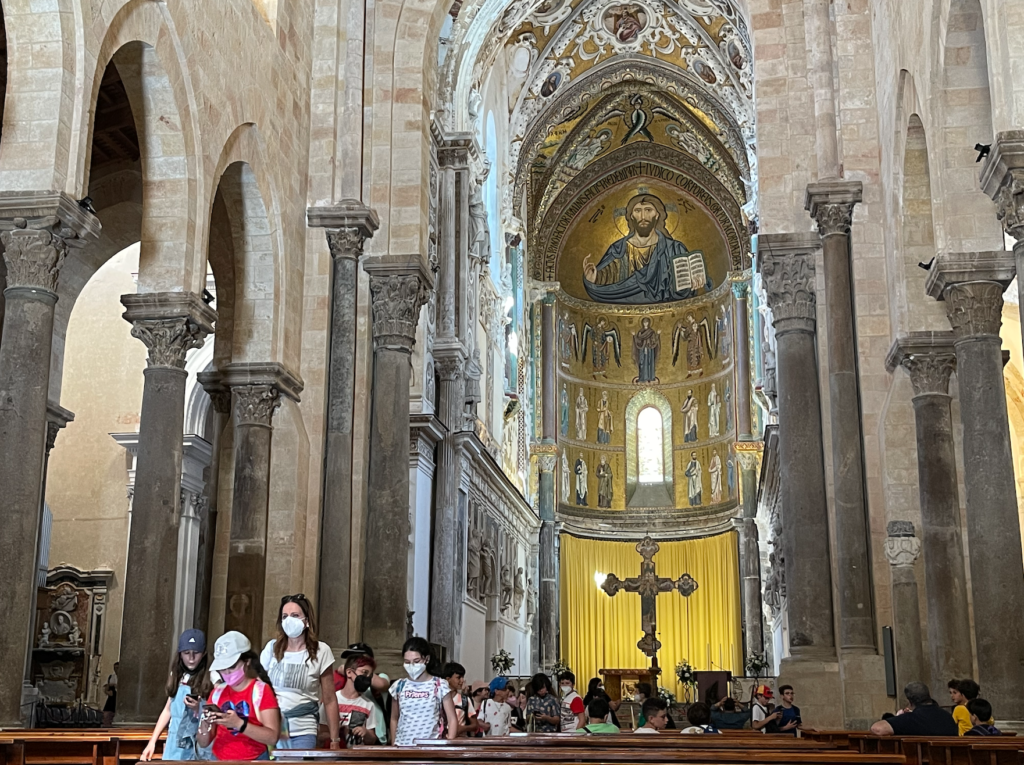
We also visited the cathedral in Cefalu, which is a UNESCO World Heritage Site. The cathedral, built in the 12th century, is 1,000 years old!
Two thumbs up to our host, Antonio, in Cefalu at the “Cefalu Suites” bnb. He referred us to a couple of great eateries run by friends: La Galleria and Kentia Al Trappitu .
The massive cathedral in the center of the town is overshadowed by the even-more-massive Rock of Cefalu (Rocca di Cefalu). At the top of the Rock is an ancient Greek temple (4th century BCE) dedicated to the Goddess Diana. Adjacent to the ancient temple are the remains of a church dedicated to St. Anne. Just a short walk away are the remains of an old castle from the 13th or 14th century.
And that’s sort of the story of Sicily: ancient structures harken to early settlers…which give way to newer structures from another wave of settlers or conquerers. Over the centuries, Sicily has been dominated by the Greeks, the Romans, the Tunisians (from Carthage), as well as kings from Spain and France. For centuries, Sicily was linked to Naples and the king (crowned by the Pope) was known as the “King of Two Sicilies”.
Christy put together a nice itinerary for us, to include some crafty stops since her brother is a potter. Our first two stops were in Caltagirone and Piazza Armerina. Both communities are in the hilly central region of Sicily.
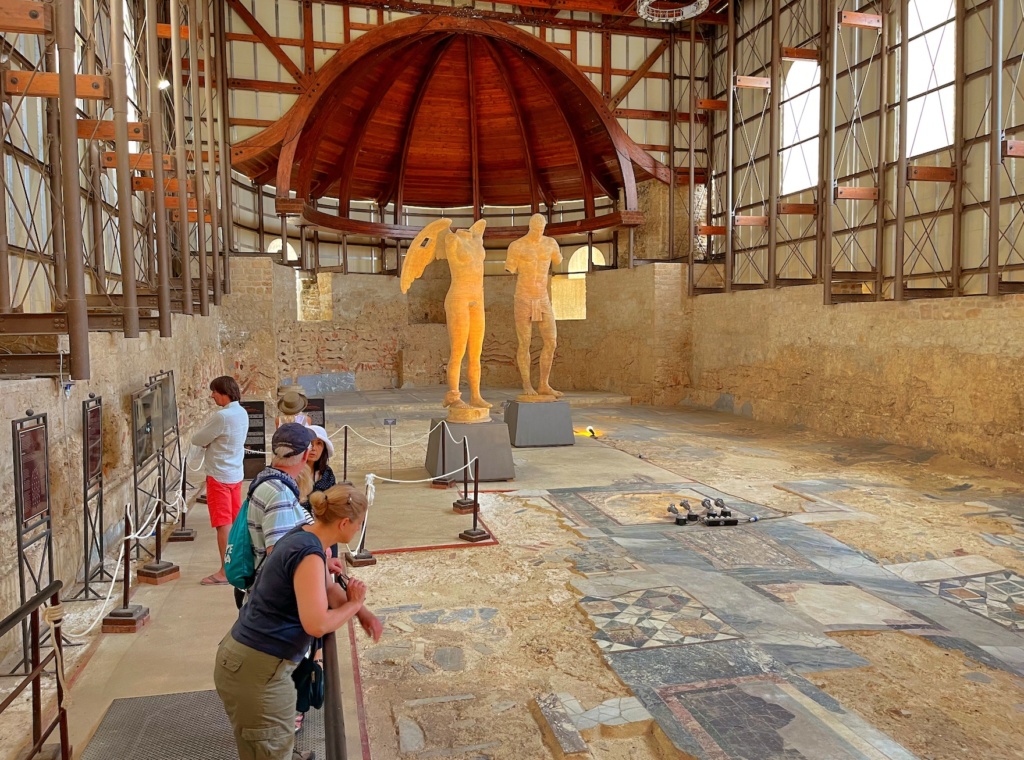
Piazza Armerina is where the remains of an ancient Roman villa are on display. The entire structure was buried under a mudslide for centuries. So when they finally uncovered it, the detailed mosaic work was in remarkable condition.
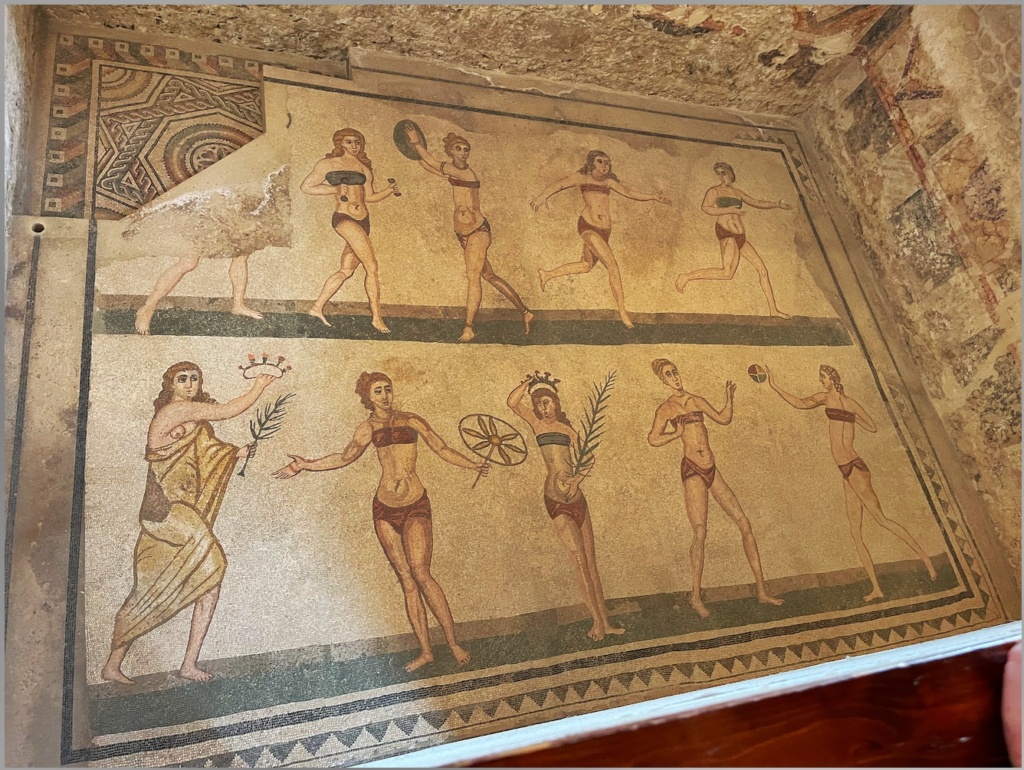
Nearby, in Caltagirone, there are gobs of ceramic shops offering one variety of Sicilian style. I remember it as the “Town of a Thousand Steps” because of its central staircase.

We spent a couple of days exploring many hilltop towns and negotiating many SUPER SKINNY streets in our Audi A4. Sam was my navigator and along with Google maps, we did pretty good. Still, Google Maps is NOT perfect and we ended up in some pedestrian-only zones, as well as the aforementioned SKINNY streets. One time, in a driving rainstorm, I had to back out….even though there were cars right in back of me.

Leaving Piazza Armerino, we headed to Agrigento on the south coast, home to the Valley of the Temples. These are well-preserved Greek ruins that cover what seems to be several square miles. It’s an amazing collection of temples and associated structures that remind visitors it was the Greeks who first settled Sicily. And they left their mark.
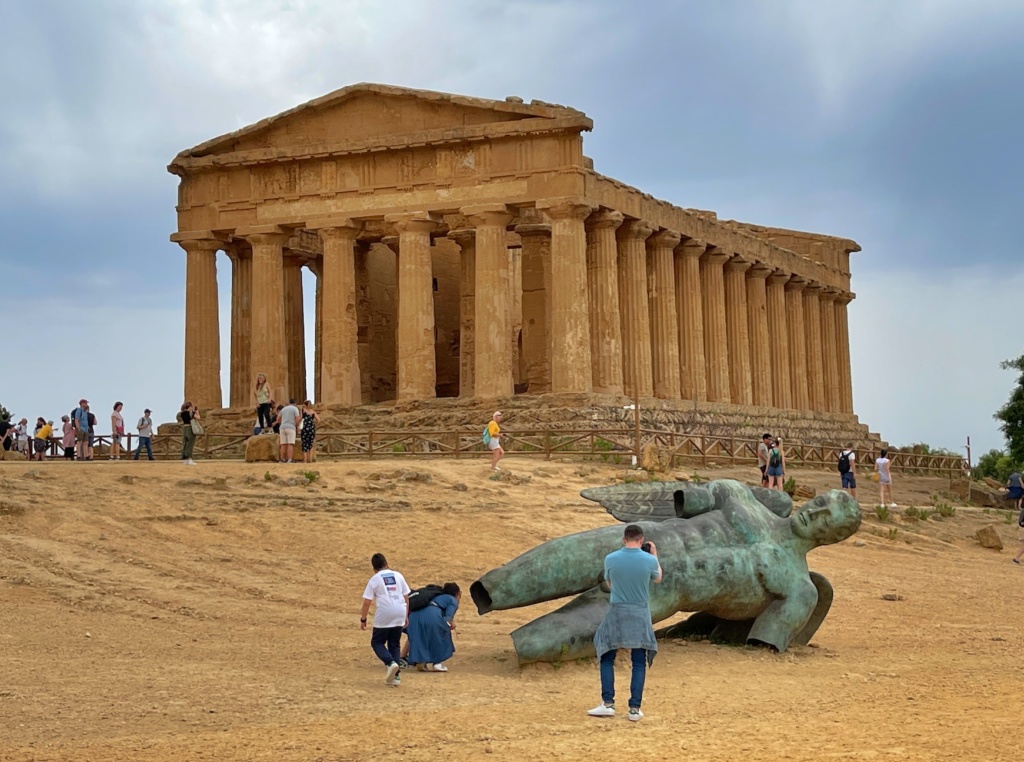
That day was a long one for us, as we continued all the way to Trapani on the west coast. This is a busy port city. In addition to several islands just off the coast, there are ferries that go to Tunis and to Sardinia from the port. And it’s a busy fishing port as well. We enjoyed delicious seafood at a couple of downtown restaurant.The tuns was fresh and delicious. There was plenty of “pasta fresca” everywhere, as well as lovely, ripe tomatoes (Alaska food porn!). Sicilians also love octopus, mussels, clams, lobsters and swordfish. You really can’t go wrong, especially if you wash it down with some nice Sicilian wine.
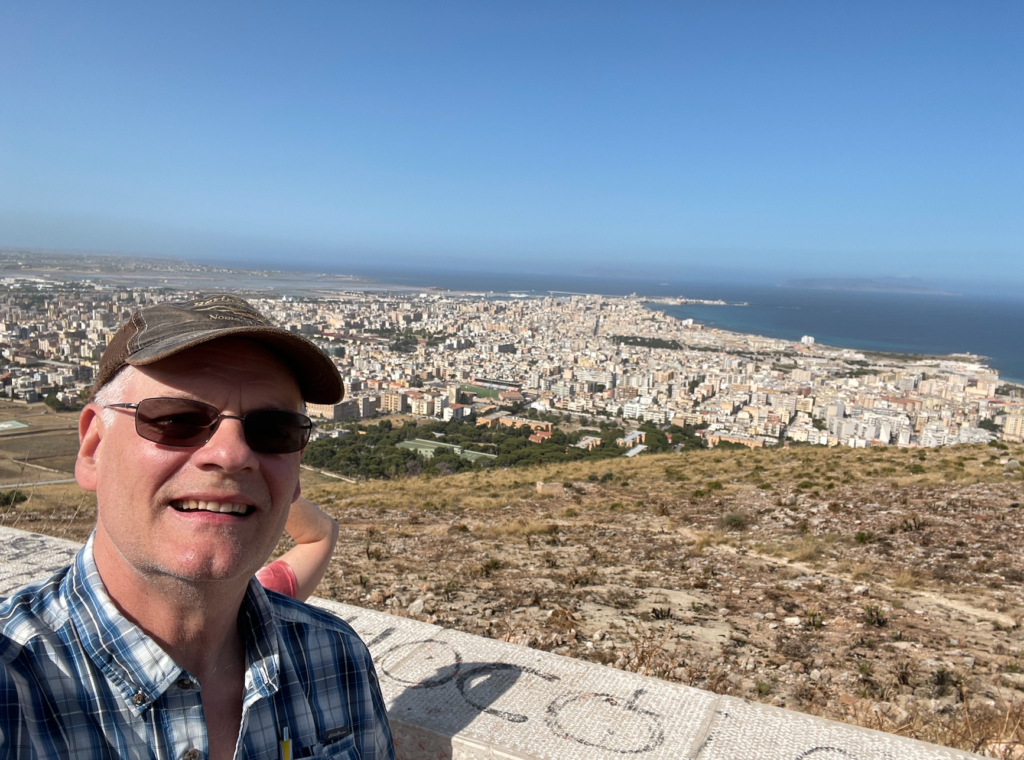
Speaking of good Sicilian wine, we stumbled on a nice family restaurant in Palermo. We stayed at a small BnB near the port. “Grano Granis Trattoria Tipica Siciliana” ( Via Salvatore Spinuzza, 33, 90139 Palermo PA, Italy ) was right around the corner. The food was delicious—and the house wine really was remarkable. The son was the waiter and the mom was the cook. Our party of four enjoyed some pasta, some caprese salad and some steak. Two thumbs up.
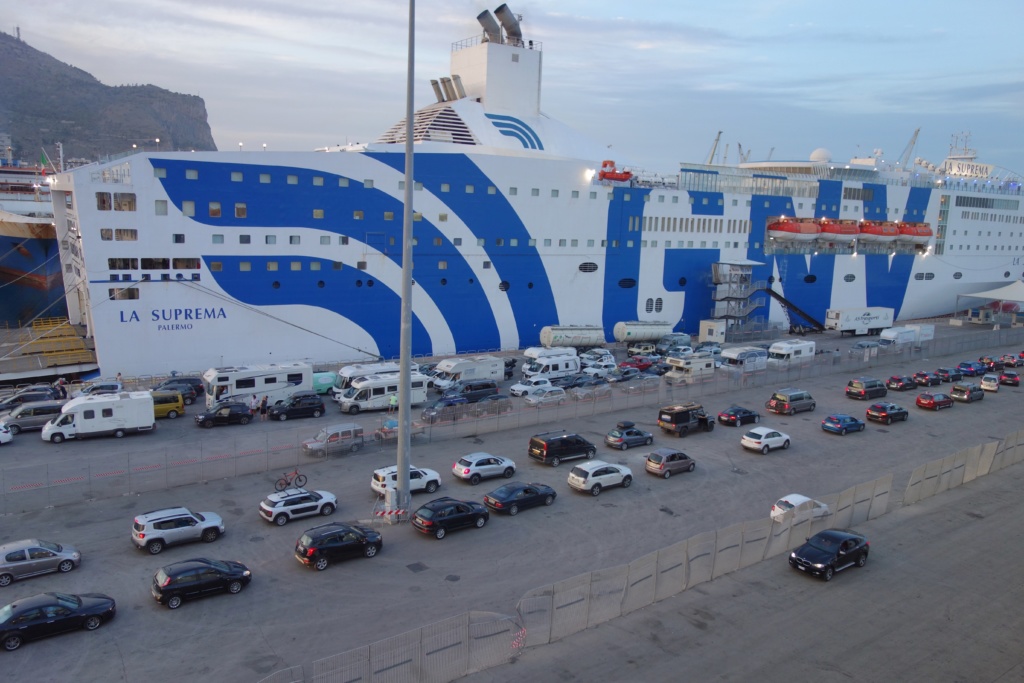
Instead of flying home from Palermo, we took the overnight ferry to Napoli (Naples) . Naples and Palermo are the capitals of the “two Sicilies”. It was our first visit.

The ferry was huge—two or three decks for cars and trucks and several decks for passengers. Our cabin had a lower and upper bunk. We had a private bath and everything was clean and efficient. The ferry is run by a Palermo-based company “GNV” and they run ferries all over the Mediterranean, from Barcelona to Albania. The wi-fi didn’t work, but it was smooth sailing through the night and when we woke up, we were in Naples.
We stumbled off the boat and made our way to the metro and then to “BnB Tecla” in the heart of the central historic district. Our host, Vanna, was delightful, In addition to yummy breakfasts each morning with delicious Neapolitan pastries, she was super-helpful with recommendations on tours to Pompeii, directions to the ferry for passage to Capri and Ischia, tips on local sights, trains and taxis. The wi-fi was fast and free and the a/c worked great. Two thumbs up.
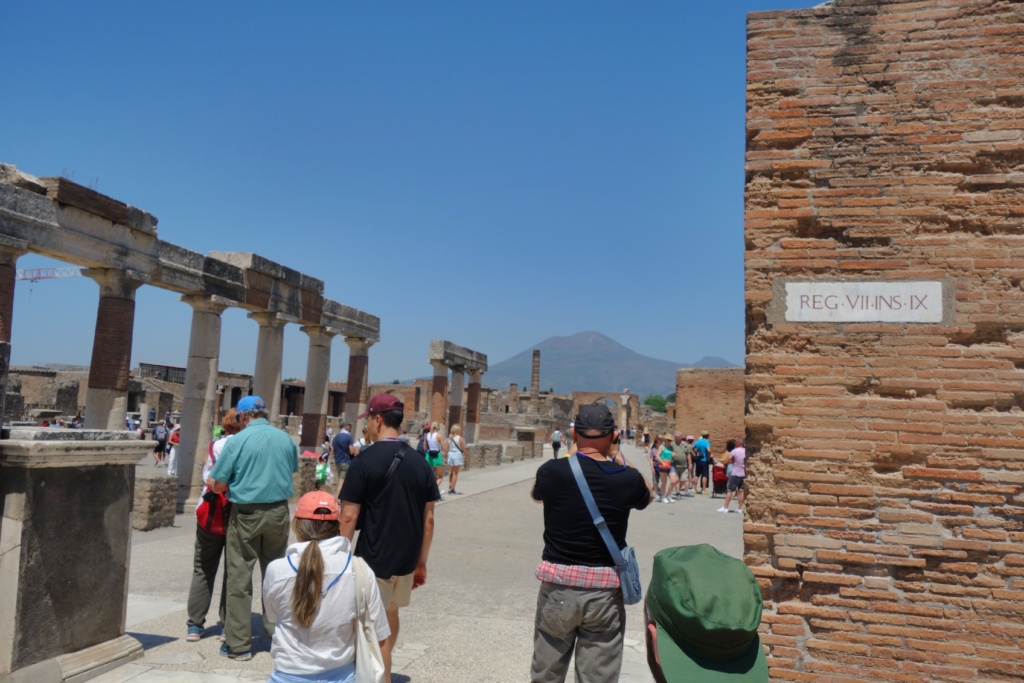
Our day-long tour to Pompeii was incredible. There’s nothing like walking the streets and seeing the ancient city with your own eyes to put the enormity of the tragedy into perspective. Mt. Vesuvius was about twice the size it is now before the explosion and its broken peak still looms over the city!
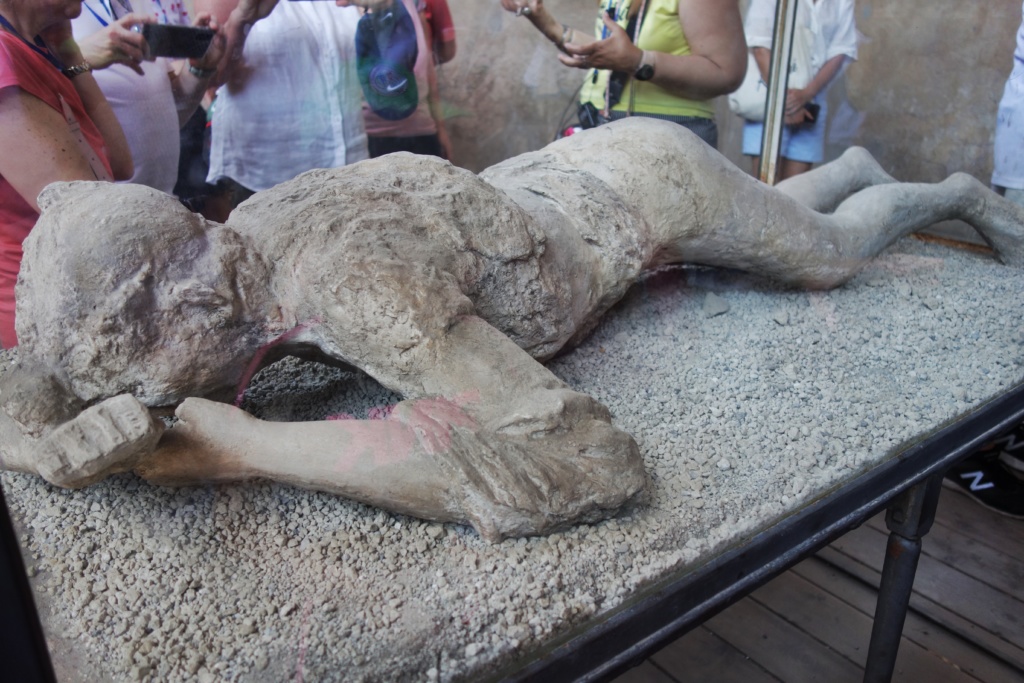
You have to be strategic about what to see and do in your limited time. We walked through many small streets —and managed to see the archeology museum and St. Elmo’s Castle overlooking the harbor. We saw many important churches, but still missed seeing some of the sculptures.
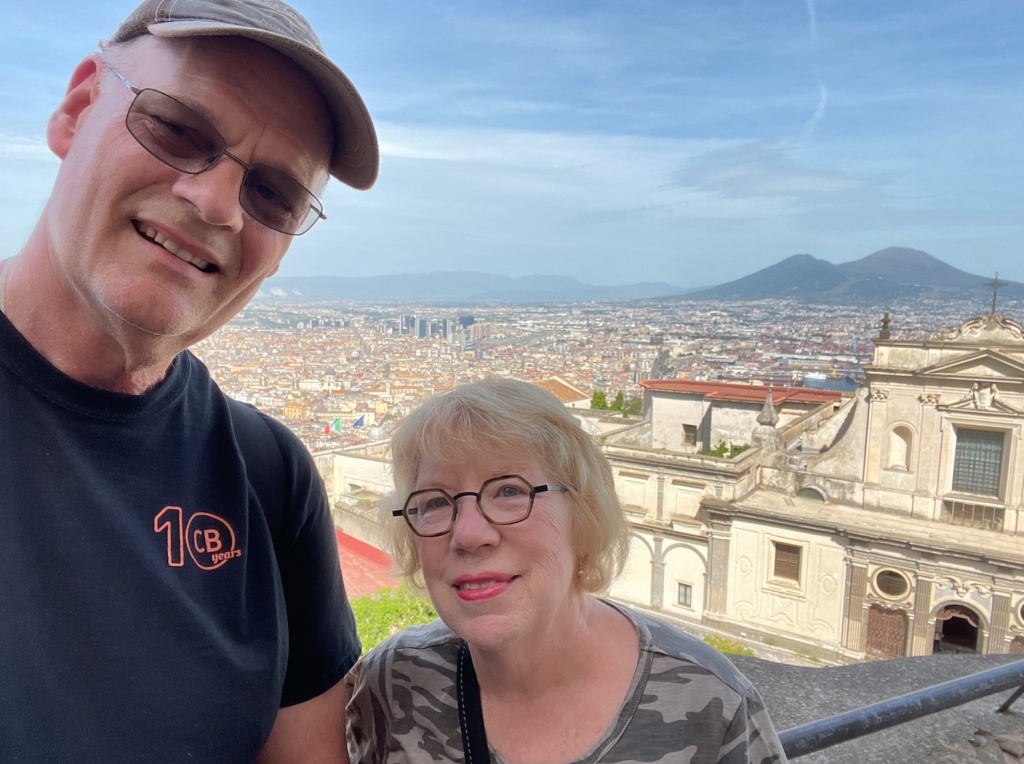
After returning to the sunshine in Alaska, it’s taken a little time to get over jetlag…but that’s where those nonstop-over the top flights come in handy!!
Travel notes:
CONDOR. Nonstop over-the-top service thru September. We opted for “Premium Economy” for the extra legroom, baggage allowance and overall vibe. Nicer seats, too.
Flights beyond Frankfurt: We fly Lufthansa or its subsidiaries Swiss and Austrian. Frankfurt is the LH hub. If one of their planes breaks, there’s another nearby.
CAR: I prepaid my car rental in Palermo with Europcar. They refused to rent to me because I didn’t have an “international driver’s license” (you can get one for $20 at AAA). We went to Sixt Car Rental. They offered us a better car and a savings of $100–without fiddling with the int’l driver’s license scam. It was a little less than $90 per day for an Audi A4 hatchback, including the mandatory Italian insurance. Google Maps works pretty good–but it’s not perfect.
LODGING: Christy made most of the reservations through Booking.com . The BnBs we stayed at all were pleasant enough and centrally-located in Palermo, Cefalu, Piazza Armerina, Trapani and Napoli.
CONNECTIVITY: I always recommend taking an unlocked phone and plugging in a local SIM card. But I ended up using AT&T’s $10/day plan. It worked–but it costs too much.
COMMUNICATING: We don’t speak Italian–and you can’t count on people speaking English. Everybody does the best they can. Google Translate helps!
COVID. We wore masks inside, even tho’ Italy’s population is mostly vaccinated. Masks are mandatory on planes and trains. For MANDATORY COVID test prior to re-entry in to U.S., we carried our own COVID tests from eMed and did a video call the day before our flight (antigen test).
TRAVEL INSURANCE. We have an annual plan with Allianz which covers emergency evacuation, baggage loss/delay, doctor/dentist visit and other stuff. It’s less than $150 per year. It does NOT cover trip cancellation.
Share this Post


